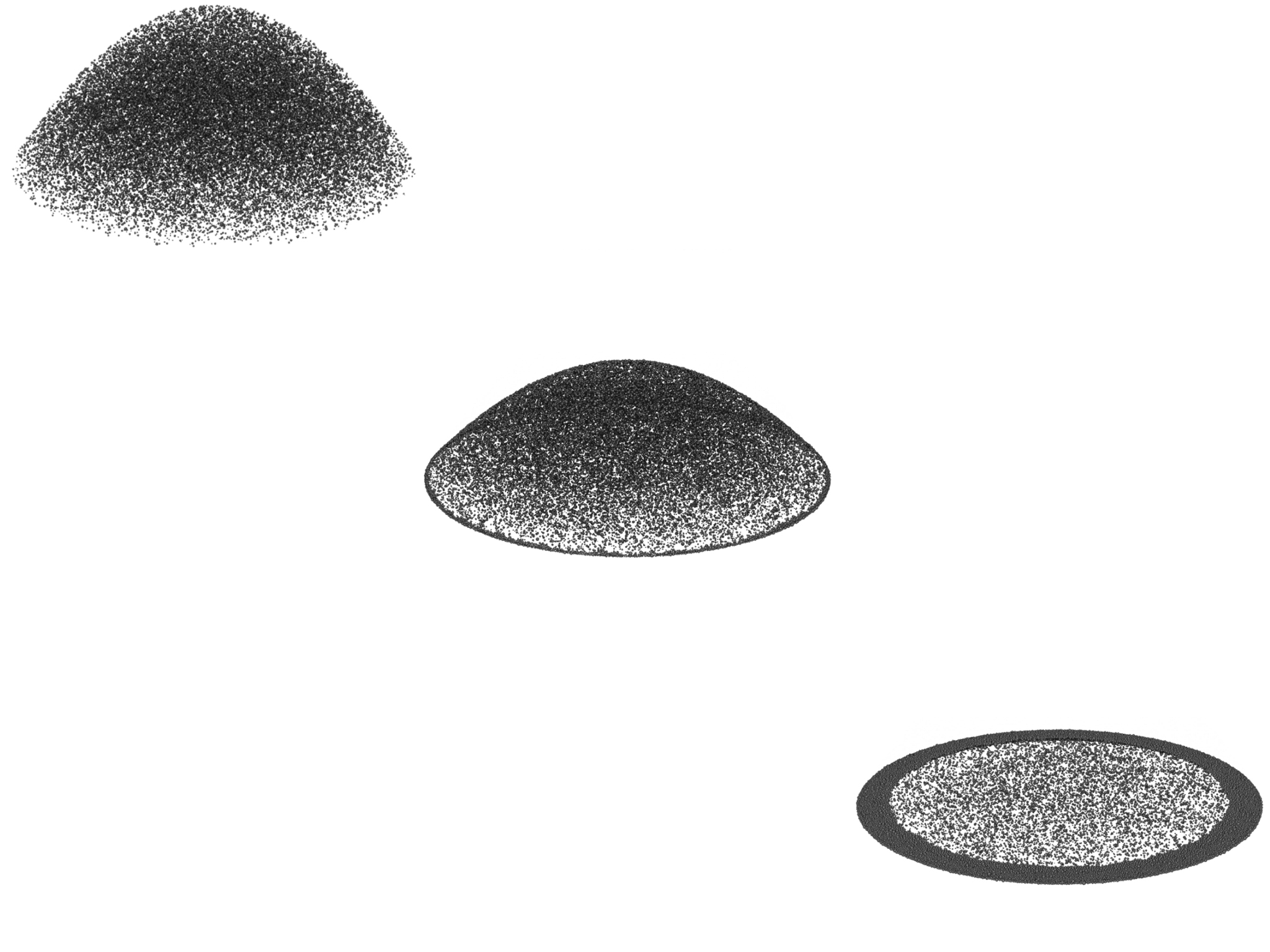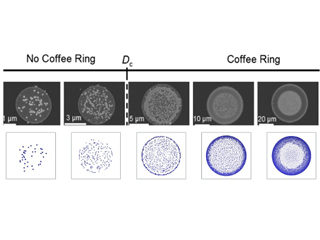Drying: predicting the deposit pattern of drying particulate suspensions
Introduction
The coffee-stain effect is a well-known phenomenon: If a drop of coffee is spilled, it is likely to leave behind some unattractive ring-shaped deposits. This everyday effect can be of interest for technical applications, e.g. ink-jet printing of conductive microstructures for electronic circuits.
As an example, RFID-applications use small circuit paths which are printed on thin substrates and sintered afterwards. The inks used in this process are suspensions of metallic particles which sediment on the substrate and build up the circuit paths. To ensure high quality of the product, the structure of the particle deposit in the circuit path should be as homogeneous as possible.
The task

Both, formation of coffee-stains and ink-jet printing of complex microstructures are governed by the same sedimentation processes, which determine the characteristics of the deposit. On this account, the goal of the project was to develop a model capable of simulating the formation of three-dimensional deposit structures, taking into account the relevant process parameters.
The manner of sedimentation of the suspended particles is governed by several non-trivial effects. Caused by gradients in the surface temperature, evaporation is enhanced in the outer regions of the drop, inducing a flow towards the edges which carries particles and, hence, enhances ring formation. On the other hand, the same temperature gradients can induce a gradient in surface tension and thus cause a flow along the surface back into the bulk drop, which reduces the probability of ring formation. Also, depending on several parameters, the diffusion of the particles may become relevant and prevent ring formation. The manner in which the particles of a real system actually sediment mainly depends on the relation of these effects.
Results

In this project, a simulation model was developed which is able to predict the structure of deposits left behind by a dried drop of a particulate suspension. For this purpose, an analytic model of the fluid flow inside the drying drop was coupled with explicit simulation of the particle movement. The explicit simulation is based on the Discrete Element Model (DEM) and includes the interaction between the solid particle through contact, steric, electrostatic and van-der-Waals forces (DLVO theory) as well as a Brownian motion.
This simple and efficient method allows for assessing and optimizing the preferential deposit structures of a given system prior to experimental investigations and, hence, can serve to significantly speed up the product development process.
 Fraunhofer Institute for Mechanics of Materials IWM
Fraunhofer Institute for Mechanics of Materials IWM